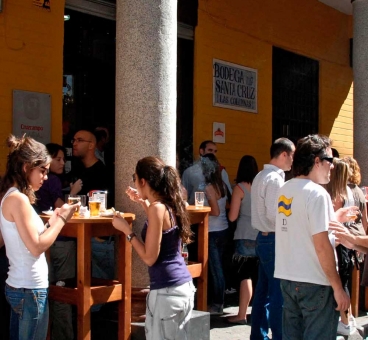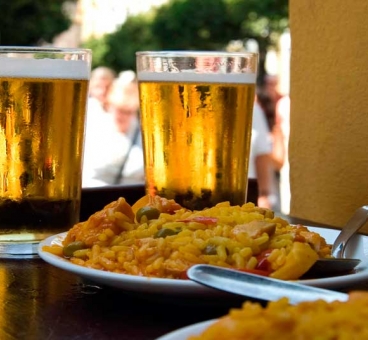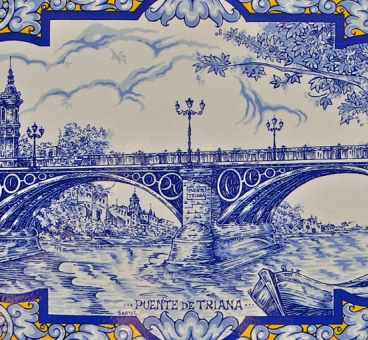The House-Palace of the Pinelo family hosts the headquarters of the Royal Academy of Fine Arts of Saint Isabel of Hungary. This public corporation is part of the set of entities associated to the Institute of Spain, whose objectives are the promotion and dissemination of Fine Arts through public promotion, dissemination and disclosure activities, research, conservation, and restoration of art works and materials that constitute part of the heritage. In its origins this building hosted the Academy of Painting established by Bartolomé Esteban Murillo, Francisco de Herrera el Mozo, Juan de Valdés Leal and other contemporary artists in the Casa Lonja of Seville, in order to promote the teaching of Fine Arts. The Academy lived longer that its creators, but other artists continued their work. In 1771, during the Spanish Enlightenment period, the King Carlos III took the Academy under his protection as he did with other similar institutions, such as the Saint Carlos Academy of Fine Arts. In 1843, during the regency of Queen María Cristina and the liberal reform, this academia was named Royal Academy of Fine Arts of Saint Isabel, as a homage to the still minor Queen Isabel II. All institutions established as Academy extended their duties and from then on, they were in charge of the maintenance of the historical and artistic heritage of the city and created the Museum of Fine Arts. During the dictatorship of Primo de Rivera it is renamed as Royal Academy of Fine Arts of Saint Isabel of Hungary. The unification of the regulations applied to academias is accomplished by the establishment of homogeneous regulations for this kind of institution, when the statutes of Saint Isabel of Hungary were assimilated to the ones of the Royal Academy of Fine Arts of Saint Fernando in 1942.
Sevilla was called Nova Roma (New Rome).
tweetCard
Monday - Friday: 10:30 / 11:30/ 12:30
+34 954 22 11 98
Calle Abades, 14





